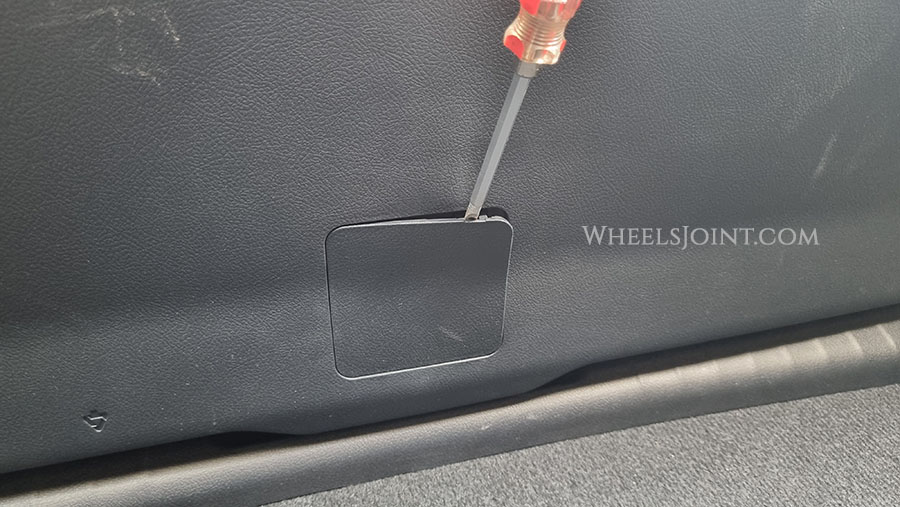If you own a Toyota Fortuner and you’re facing the frustrating issue of a liftgate or back door that won’t open, you’re not alone. Many vehicle owners encounter this problem at some point, and it can be quite inconvenient, especially when you need to access the cargo area or retrieve items from the back of your SUV. Fortunately, there are some steps you can take to open the liftgate from the inside of your Toyota Fortuner.

Toyota Fortuner is equipped with a manual release lever on the inside of the liftgate, which can be used as a backup option to open the liftgate when the electronic or mechanical systems fail.
The manual release lever is located on the inner surface of the liftgate, near the latch mechanism.

Step 1: Unclip the cover with a flat head screwdriver.


Step 2: Remove the cover.

Step 3: Loosen the screw a little and move the cover to the left.


Step 4: Push and move the lever to the right with a screwdriver.

The liftgate will unlatch. It should now open freely, allowing you to access the cargo area.
The manual release lever is typically designed for emergency situations when the liftgate cannot be opened using the regular electronic or mechanical methods. If you’re able to open the liftgate using the manual release lever, it’s important to have your vehicle inspected by a qualified mechanic to diagnose and repair the underlying issue causing the liftgate to not open properly.
Causes of power liftgate failure
There are several potential causes for an electronic liftgate to fail on a Toyota Fortuner. Some common reasons include:
Electrical malfunction
The liftgate system relies on electrical components, such as motors, sensors, switches, and wiring, to operate properly. If any of these components fail due to wear and tear, damage, or a manufacturing defect, it can result in a liftgate that won’t open electronically.
Mechanical issue
The liftgate is operated by a complex system of mechanical linkages, hinges, and latches. If any of these components become misaligned, damaged, or worn out, it can hinder the proper operation of the liftgate and prevent it from opening electronically.
Sensor or switch malfunction
Many modern vehicles are equipped with sensors or switches that detect the presence of obstacles, the position of the liftgate, or other conditions to ensure safe and smooth operation. If any of these sensors or switches fail, it can disrupt the liftgate’s electronic operation and prevent it from opening.
Power or battery issues
If the vehicle’s battery is low or weak, it may not provide enough power to operate the liftgate’s electronic components properly. Similarly, issues with the vehicle’s electrical system, such as blown fuses or faulty wiring, can also affect the liftgate’s electronic operation.
Software or programming issue
Modern vehicles with advanced electronic features, including liftgate operation, rely on software or programming to function correctly. If there is a glitch or error in the software or programming related to the liftgate, it can cause the liftgate to fail to open electronically.
Physical obstruction
Sometimes, the liftgate may not open electronically if there is a physical obstruction, such as debris, ice, or snow, blocking the path of the liftgate. This can trigger safety features that prevent the liftgate from opening electronically to avoid potential damage or injury.
If you’re experiencing issues with your Toyota Fortuner’s liftgate not opening electronically, it’s recommended to check for any visible obstructions, and consider seeking professional assistance from a Toyota dealership or a qualified mechanic to diagnose and repair the issue accurately.









